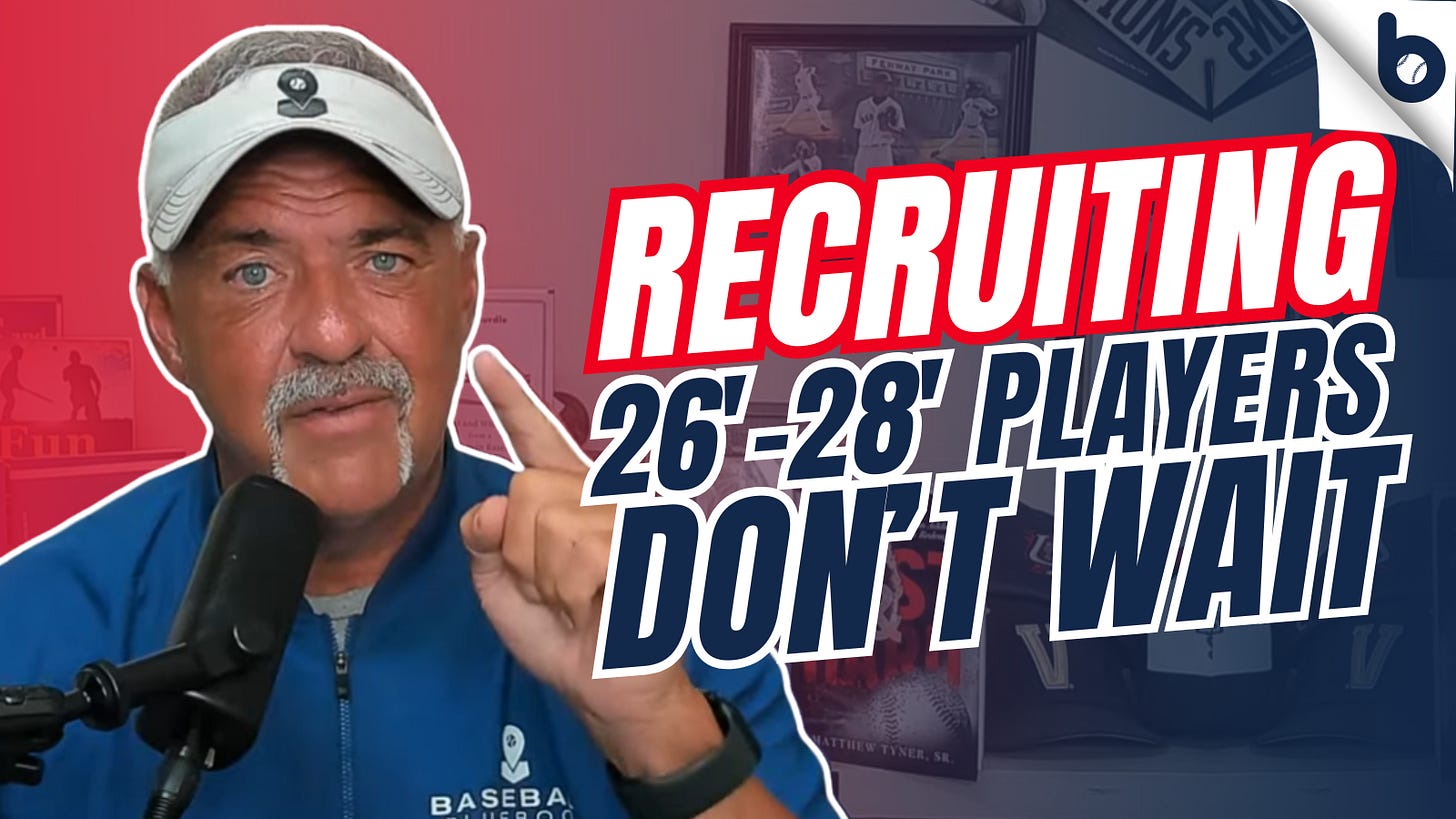Welcome to the new reality of college baseball recruiting, where wishful thinking and fairy tale timelines are replaced by cold, hard truths. If you're a parent of a 2026–2028 athlete, grab your coffee and buckle up—because the path to college baseball has changed, and no one's sugarcoating it anymore. From major league partnerships to roster cutthroats and portal chaos, college coaches are no longer daydreaming on potential. They're building grown-man rosters that are strong, fast, skilled—and mentally ready. Translation: if your son isn’t developing strength and skill now, the only thing he’ll be hitting in college is the cafeteria.
Let’s be blunt: travel baseball isn’t the golden ticket it once pretended to be. The game’s evolved, and the system is flooded. Showcase invites and eye-popping uniforms don’t replace actual development. Legion ball is back. Strength training? Non-negotiable. And those overpriced “academies” promising D1 glory? They're usually selling a dream wrapped in debt, stripped of a real high school experience, and ending in regret. Walt Beede said it best—ask yourself if 30-year-old “future you” would be glad they skipped prom for an online class at Baseball Academy Prep.
Here’s what actually matters to coaches: speed, size, strength, skill, and school. Not your kid’s travel ball batting average, not their Instagram highlights, and definitely not a $400 bat flip. Coaches want athletes who can handle the grind—mentally, physically, and academically. And that transcript? Turns out it’s gold. Community involvement, good grades, and character matter, especially at D2, D3, and NAIA schools, where academic money can be the difference between full-tuition or full-regret.
So what’s the play for parents? Stop chasing validation and start building a foundation. Evaluate your athlete every six months. Prioritize strength and skill training. Embrace the programs that show interest. And remember—college baseball isn’t about picking a school off a list. It’s about being wanted by the right fit. The dream is still alive, but only for those willing to outwork, outsmart, and outgrow the noise.
✅ Action Items for Parents (Start Now):
Build a Training Plan
Focus on strength, speed, and skill development. Find a reputable trainer or program—not just a hitting/pitching guy with a smartphone.Audit Your Athlete’s Routine
Are they lifting regularly? Running? Getting better? If not, scrap the next showcase and reinvest that time.Get an Honest Evaluation
Every 6 months, reassess: Is your athlete improving? Are they plateauing? Get real feedback—even if it stings.Work on the Transcript
Encourage your athlete to volunteer, join clubs, and pursue leadership roles. These add up on college applications and open academic scholarship doors.Don’t Dismiss “Smaller” Programs
D3s and NAIA schools have incredible academics, great baseball, and real development opportunities. Be open. They might be the best fit.Create a Game Plan (Not Just a Schedule)
Don’t just fill up the summer with games. Build a roadmap with purpose: development, rest, recruitment strategy, and education.





